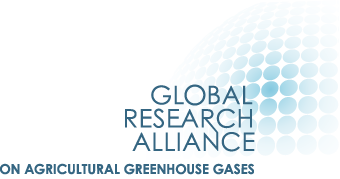Keywords: QA/QC | institutional arrangements
Poland’s inventory compilation agency, National Centre for Emission Balancing and Management (KOBiZE), has put in place a quality assurance (QA), quality control (QC) and verification program for the annual GHG inventory.
QC activities are carried out by the personnel directly responsible for the inventory and are aimed at maintaining standards and quality. The main QA activities conducted are Tier 1 methods applied to all sources and sinks. Tier 2 procedures are applied to key categories (including enteric fermentation). QC covers routine technical activities to maintain the correctness and completeness of data and eliminate errors and determine potential deficiencies. Checks are made on the accuracy of data and the procedures for calculation of emissions, uncertainty, archiving of information and reporting.
QA covers procedural systems for control carried out by experts not involved directly in compiling the inventory in a given sector. QA activities are conducted on a completed inventory and aim to ensure that national inventory represents the best level of knowledge and available data, and to support QC.
Verification activities include comparisons with external emission analyses estimates and databases prepared by independent bodies or teams. They allow to improve inventory methods and outcomes in both the short and long term.
The KOBiZE Data Management Manual describes the inventory requirements for databases, software, worksheets, final reports as well as QA/QC documentation. Documentation of data and calculation QC are archived in electronic and hardcopy forms. The main procedures for QA/QC activities are described in the National Quality Assurance Quality Control and Verification Program of the Polish Greenhouse Gas Inventory and the detailed QC procedures are procedures performed by KOBiZE experts.
Table 1 summarizes the timeframe for inventory compilation and QA/QC activities. The dates for particular stages are established based on country specific availability of statistical data as well as national (legal) and international obligations.
Table 1: Timetables for inventory preparation and check (n-submission year) in Poland
| Timing | Activity |
|---|---|
| June 15 December (year n-1) | • Data and emission factor collection (estimation) • Check for consistency and correctness of emission data, trends and factors, using QC and verification methods • Initial calculations and checks of GHG emissions • Submission to Ministry of Environment for acceptance |
| 15 January (year n-2) | • Submission of GHG inventory for the year n-2 and elements of NIR to EIONET CDR as required by EU regulations |
| 15 December 15 February (year n-2) | • Emission results and methodology verification based on comments from ministerial emission experts (QA methods applied) • Elaborate final inventory, additional checks and final corrections, preparation of NIR and CRF tables (QC and verification methods applied) • Submission to Ministry of Environment for acceptance |
| 15 March (year n-2) | • Emission results and methodology verification based on comments by external sector experts in inter-ministerial check of the report (QA methods applied) • Submission of NIR and CRF tables to EIONET CDR as required by EU regulations |
| 15 April (year n-2) | • Submission of GHG inventory for the year n-2 to UNFCCC secretariat (NIR and CRF tables) |
Source: Poland NIR 2017
Each inventory sector undergoes detailed QC procedures carried out by a designated expert during its preparation, after completing the calculations, after generating the CRF tables generation and after completing the NIR report.
As a part of QA activity, the inventory team cooperates with specialists from different institutes, associations and individual experts who are involved in verification of data and assumptions to the inventory. Domestically, once the NIR is delivered to the Ministry of Environment, it undergoes internal consultation among departments, and external consultation through inter-ministerial dialogue, during which agencies sub-ordinate to the relevant ministry review the inventory. QA is also performed by EU and UNFCCC agencies.
After including obtained comments and amendments into the NIR, the NIR is sent to the European Commission where inventory results and methodology are also discussed. The national inventory results are also verified by the European Union. Since 2012 this verification is performed using the EEA Emission Review Tool (EMRT, EEA Review Tool).
The results of the submitted CRF files are also controlled by the UNFCCC Secretariat, and annual international review of the Polish GHG inventory under UNFCCC is a key element in the process of quality improvement.
Author: Andreas Wilkes, Values for development Ltd (2019)

